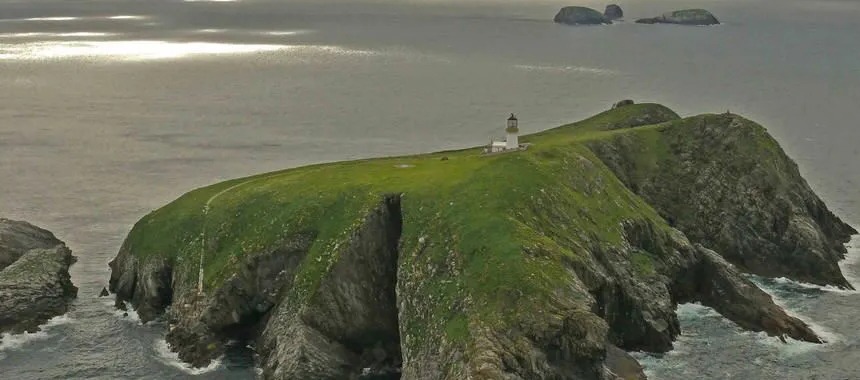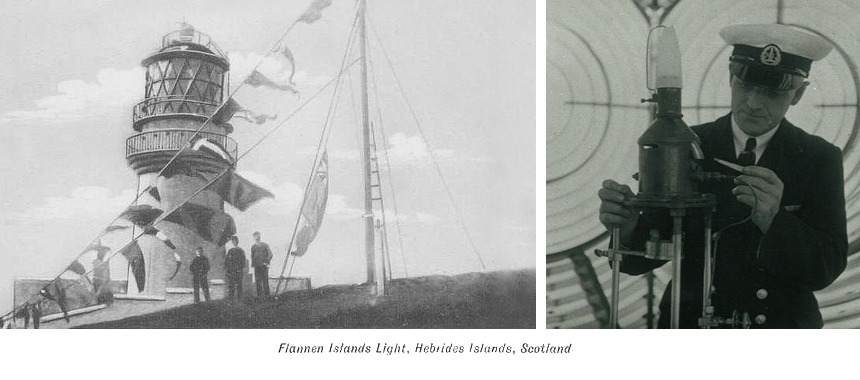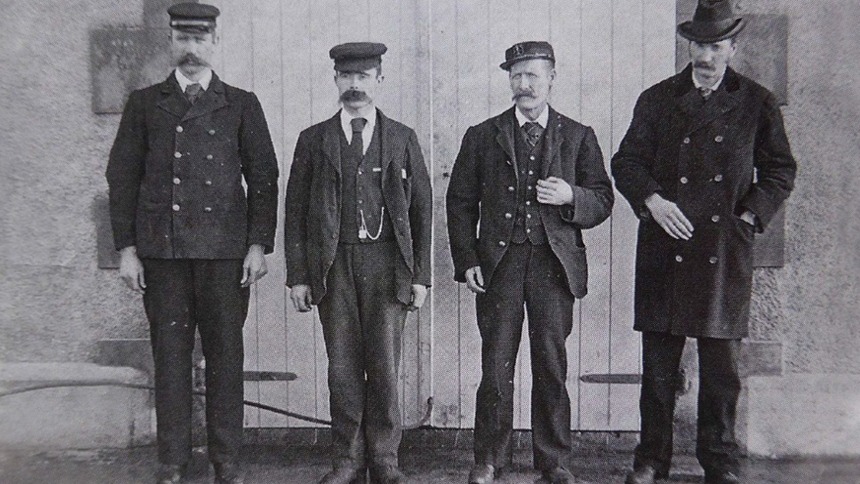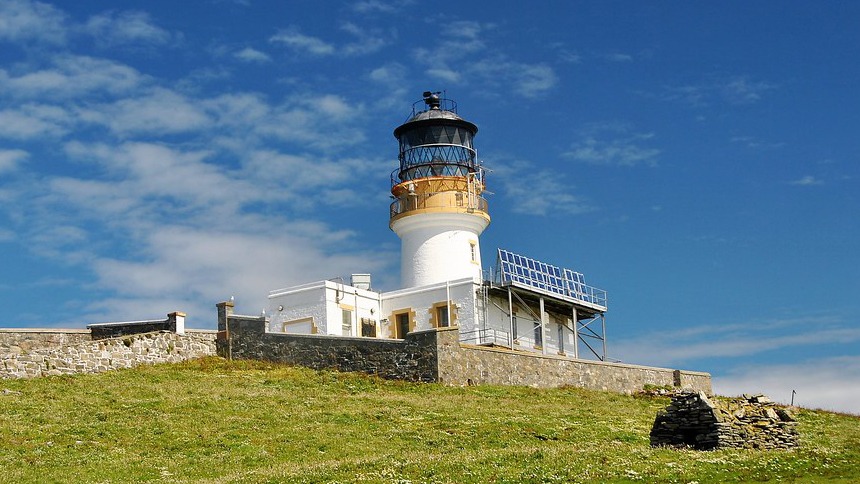Тайна маяка острова Фланнан

The Scottish coastal waters hold many stories, but one of them, which occurred in the early 20th century, has yet to find a logical conclusion.
The story of the Flannan Isle is associated with the mysterious disappearance of three lighthouse keepers in December 1900. This island is located in the Atlantic Ocean, approximately 32 kilometers west of the Scottish coast. The tale of the missing individuals has become one of the most famous maritime mysteries in Britain.
The Eilean Mor lighthouse on Flannan Isle was constructed in 1899 and stood on the highest cliff of the island, reaching a height of about 27 meters. The lighthouse consisted of three towers and was equipped with state-of-the-art lighting technology for that period, including gas lamps and an additional diesel generator.
 Eilean Mor Lighthouse on the Flannan Isle
Eilean Mor Lighthouse on the Flannan Isle
However, on the night of December 7, 1900, the captain of the passing steamship «Archer» noticed that the lighthouse was not functioning. Several days later, on December 26, a team was sent to the archipelago to investigate. Upon arrival on the island, the team discovered that the lighthouse had been abandoned and the keepers — Thomas Marshall, James Ducat, and Donald MacArthur — had disappeared without a trace.
During the initial inspection, several strange circumstances were noticed. There were no people in the lighthouse tower, and they also did not return to their living quarters. Upon further investigation, it was determined that the table and chairs were left in a disarrayed state, and some items were damaged. Additionally, it was discovered that one of the lighthouse boats was missing, while the other one was found shattered.
 Lighthouse keepers of Eilean Mor Lighthouse on the Flannan Isle
Lighthouse keepers of Eilean Mor Lighthouse on the Flannan Isle
After a thorough investigation, several versions were proposed to explain the disappearance of the lighthouse keepers on the Flannan Island. One hypothesis suggested that they could have been swept away by a giant ocean wave from the cliff, but it didn't explain why they left the island without warning. Another version suggested that the duty shift might have encountered an unknown problem that forced them to flee the island. These explanations left many unsatisfied, and the search for the truth continued.
In the mid-1950s, Walter Aldebert, one of the keepers of that time, arrived at the island that had intrigued many Scots and took a series of photographs at the very cliff from which, it was believed, the keepers were washed away in December 1900. The photos revealed that the impact of waves on the coastal cliffs created powerful water columns, reaching heights of up to 60 meters. When such a mass of water fell on an unsuspecting person, it would instantly sweep them into the ocean. Analyzing the materials from the official investigation, Walter speculated that the weather could have suddenly worsened, and the wind intensified. Two men, wearing storm gear, took a box of tools and headed to the western jetty to secure the weakened barrier to prevent it from being destroyed by the waves. A sudden gust of wind threw them into the sea. Upon hearing a thunderous impact, the third keeper rushed out to find out what had happened. As he approached the edge of the cliff, a towering water column swept him into the sea. However, not everyone was satisfied with this explanation.
English researcher Vincent Gaddis took notice of the ominous nature of lighthouse keeper Thomas Marshall's entries in the logbook from December 13th to 15th. According to him, they spoke of a menacing force, not a storm, that threatened the people for several days. This same belief is shared by Carey Miller, who sifted through hundreds of documents and interviewed all the keepers who had ever served on Eilean Mor Lighthouse. It turned out that for many centuries, these islands were uninhabited. Shepherds would occasionally land to graze their sheep, but never stayed overnight under any circumstances. According to their accounts, the desolate islands teemed with ghosts, and the largest of them all, Flannan Isle, served as a dwelling for elves who did not tolerate strangers. When it was decided to build a lighthouse on the island in 1899, the elves were outraged and began to seek revenge. First, a construction worker fell to his death from the gallery of the lantern tower, and then a skiff with four rowers capsized near the pier. All perished. And finally, the tragic event of December 1900 occurred. The researcher also noticed two intriguing facts: before departing for his shift, James Ducat complained that he had a strong aversion to going to Eilean Mor because he felt an impending sense of doom. Summing up all these circumstances, Carey Miller hypothesized that an invisible force residing on the island did not tolerate unwanted guests and got rid of them.
 Flannan Island Lighthouse, today
Flannan Island Lighthouse, today
However, the exact reason for the disappearance of the lighthouse keepers remained a mystery. The story became the subject of various speculations, and Flannan Isle and its history began to be attributed supernatural significance. Numerous literary and musical works were created based on this enigmatic disappearance.
And although Flannan Isle refuses to reveal its secret, the mystery of the lighthouse continues to be part of Scotland's rich maritime folklore and riddles.
- Комментарии
 ru
ru en
en uk
uk